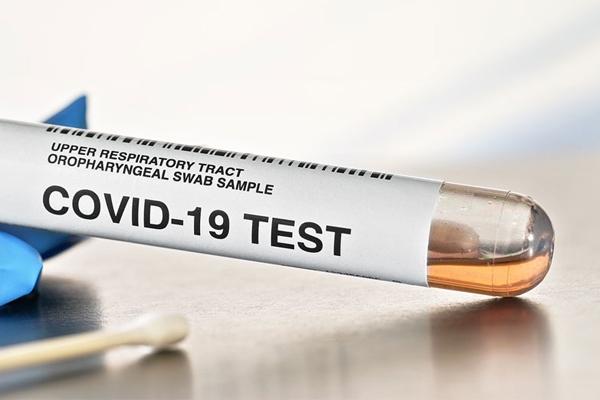Notes on artificial hip replacement
In order to avoid dangerous complications when replacing an artificial hip, the patient needs to be evaluated for the accompanying medical condition and choose the type of joint that is suitable for the body.
According to MSc.BS.CKI Dang Khoa, Center for Orthopedic Trauma, Tam Anh General Hospital System, artificial hip replacement is a surgical intervention method to replace the entire damaged bone structure, worn with abrasion. Synthetic materials. The patient is prescribed an artificial hip replacement when the joint is severely damaged (hip osteoarthritis stage IV, X-ray results show deformity of the femoral head, acetabulum) causing loss of image function. affect mobility.
The structure of the artificial hip joint is very diverse, including many different shapes and materials such as metal, titanium, cement, ceramic… Expensive joints are not necessarily the best, but choosing a joint must match the structure. body, travel needs and especially the patient’s pathology. A 2019 study on 150,000 patients showed that more than 60% of artificial joints can be maintained for more than 25 years.
Causes of artificial hip replacement
Doctor of Science said that the two main reasons that cause patients to have an artificial hip replacement are degeneration and fracture of the femoral neck. Degeneration is a natural progression of the body. The more active a joint is, the more likely it is to wear out. Degeneration is also caused by weight gain, the process of bone formation and bone destruction is out of balance, causing bones and cartilage to wear and deform. When the cartilage surface is deformed, the joint loses its function, the patient feels pain when walking.
Traumatic femoral neck fracture in patients with low bone density or osteoporosis. In young people, bone grafting can help heal bones in about 4-6 months. But for the elderly, the doctor cannot apply the method of bone fusion because the blood vessels supplying the bone are easily damaged, the bone density is reduced, so even if it is adjusted, then the femoral head will also be necrotic. deformed, requiring a hip replacement.

Degeneration and fracture of the femoral neck are the two main reasons why patients need an artificial hip replacement. Image: Shutterstock
Another case that can cause the patient to have an artificial hip replacement is due to necrosis of the femoral head. This condition occurs not only in the elderly, but also in young people, accounting for up to 30%. Many patients with femoral head necrosis are in their 20s and 30s. The causes of femoral head necrosis are diverse. About 50% of cases have no cause. The remaining cases are caused by corticosteroids, immune or congenital diseases that cause the femoral head to lack blood vessels, causing necrosis and deformity of the femur.
Necrosis of the femoral head can also be caused by a congenital pathology that causes femoral dysplasia. The patient has had an abnormally shaped acetabulum and femoral head since birth, causing changes in anatomical structure and function… Over time, the patient becomes more and more difficult to walk, deviate, and painful. Tumors proximal to the femur, pelvic tumors, after trauma can also lead to necrosis of the femoral head.
Similar to other surgeries, hip replacement carries many risks, including death. Statistics show that 0.68% of deaths during and after hip replacement have a direct cause other than hip replacement. The risk of death often comes from related diseases and comorbidities. For subjects with hypertension, blood dyskinesia, cardiac arrhythmia, blood infection, urinary tract infection, etc., specialists in internal and external musculoskeletal, cardiovascular, respiratory, urological will evaluate. medical disorders, risk prognosis to ensure the surgical process takes place quickly, safely and effectively.
The rehabilitation exercise of patients after artificial hip replacement is performed on the first day after surgery. The rehabilitation doctor will come to the bed to assist the patient with basic movements. From the second day, the patient is exercised with the machine, walking with crutches or a frame to restore muscle strength and gradually removing the frame. Elderly people can use a support frame for about 2-3 weeks.

Doctor of Science during an artificial hip replacement surgery. Image: Tam Anh General Hospital
At the Orthopedic Trauma Center, Tam Anh General Hospital, after hip replacement surgery, the patient is given a dressing change once for the doctor to assess the condition of the wound. When discharged from the hospital, the nurse will apply a special waterproof bandage to help the patient stay comfortable and prevent infection. The patient does not have to change the dressing every day. At the first follow-up visit for suture removal (7-14 days) the dressing will be removed. From there, the patient can shower and live as usual.
Although the risk factors leading to artificial hip replacement surgery are very large, Dr. Science advises patients not to worry too much.
“With the development of modern medicine, multi-specialty medical team and especially the development of technology 4.0, hip replacement technique has been greatly improved. Patients should boldly go to hospitals. There is close inter-specialty coordination, a team of experienced experts to receive artificial hip replacement to restore mobility and effectively limit complications,” said Science.
Mr. Thai
at Blogtuan.info – Source: vnexpress.net – Read the original article here



